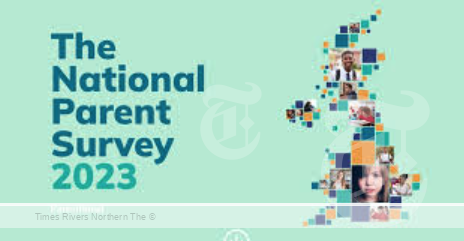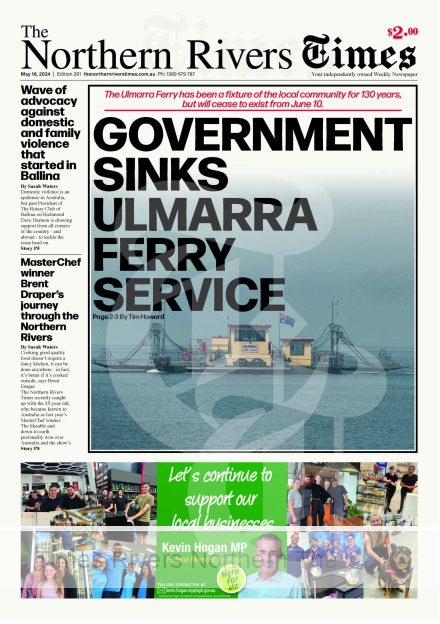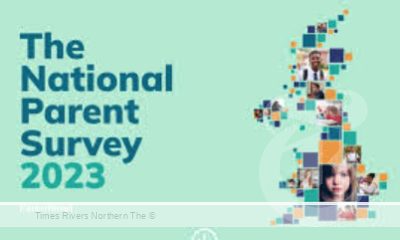Home Value Index continues to fall, down -0.6% in June
Home Value Index shows Australia’s housing downturn builds momentum in June, driven by sharper falls in Sydney and Melbourne and weakening conditions elsewhere.
CoreLogic’s national Home Value Index (HVI) recorded a second consecutive month of value declines in June, down -0.6%, to be -0.2% lower over the June quarter. Continued falls in Sydney dwelling values (-1.6% month and -2.8% quarter) and Melbourne (-1.1% month and -1.8% quarter) were the primary drivers of this month’s steeper drop, but housing values were also down in Hobart (-0.2% month and -0.1% quarter) as well as regional Victoria (-0.1% month and +1.2% quarter).
Every capital city and broad rest of state region is now well past their peak rate of growth as trend rates eased across the remaining markets.
Advertisements

Australia’s third largest city, Brisbane, has seen growth in housing values flatten out to just 0.1% in June, while Adelaide remains the only capital still recording a monthly growth rate higher than 1.0% (1.3%). Growth in Perth’s housing values, which were temporarily showing a second wind as state borders reopened, are again losing steam with values up 0.4% in June.
CoreLogic Research Director, Tim Lawless, noted the housing market’s sharper reduction in growth coincides with the May cash rate hike, surging inflation and low consumer sentiment.
“Housing value growth has been easing since moving through a peak in March last year, when early drivers of the slowdown included rising fixed term mortgage rates, an expiry of fiscal support, a trend towards lower consumer sentiment, affordability challenges and tighter credit conditions,” he said.
“More recently, surging inflation and a rapidly rising cash rate have added further momentum to the downwards trend. Since the initial cash rate hike on May 5, most housing markets around the country have seen a sharper reduction in the rate of growth.
“Considering inflation is likely to remain stubbornly high for some time, and interest rates are expected to rise substantially in response, it’s likely the rate of decline in housing values will continue to gather steam and become more widespread.”
The combined regionals index remained in positive growth territory in June, albeit slightly, rising 0.1%, reducing quarterly growth from a peak of 6.6% in April last year, to 2.0% over the three months to June. In contrast, the combined capital cities index was down -0.8% over the June quarter, reducing from a peak of 7.1% over the three months to May last year.
Unit markets are holding their value a little better than houses across the largest capitals. Sydney recorded a -3.0% drop in houses values through the June quarter compared with a -2.1% fall in unit values. Melbourne also showed a smaller quarterly decline in units relative to houses at -0.5% and -2.4% respectively.
“The stronger performance across the unit sector comes after house values consistently outperformed units through the upswing,” Mr Lawless said.
“Since the onset of the pandemic in March 2020, capital city unit values have risen 9.8% compared to 24.7% for houses, resulting in better affordability across the medium to high density sector.”
As housing conditions slow, we are seeing the market swinging back in favour of buyers. While national advertised stock levels remain -7.4% lower relative to 2021, in Sydney and Melbourne, where housing conditions are the weakest, total advertised supply is now 7-8% above the levels recorded a year ago and well above the five-year average. Hobart has seen advertised stock levels jump 48.4% higher relative to last year and inventory is 20.7% higher in Canberra.
In Adelaide, where housing conditions remain quite strong, advertised stock levels are still -16.9% lower than last year and almost -40% below the five-year average. Brisbane (-14.9%) and Perth (-16.2%) are also showing low advertised stock levels relative to this time last year.
Mr Lawless said the rise in advertised supply across some markets is mostly due to a slowdown in the rate of absorption.
“Estimated transactions in Sydney throughout the June quarter were -36.7% lower than a year ago while Melbourne is down -18.3%. At the same time, the flow of new listings added to the market is falling as selling conditions becoming more challenging and listings move into a seasonal lull.
“We aren’t seeing any signs of panicked selling as housing conditions cool, in fact the trend is the opposite, with the flow of new listings to the market slowing.”
CoreLogic estimates home sales nationally through the June quarter were -15.9% lower than a year ago, but are still holding 13.0% above the previous five-year average.
Tougher selling conditions are evident in weekly auction results, where the combined capitals clearance rate has held below 60% since the last week of May, longer selling times and higher levels of vendor discounting rates across private treaty sales.
Rental markets remain extremely tight around the country, with rents now consistently rising at a faster rate than housing values.
Nationally, rents increased 0.9% in June, taking the annual growth rate to 9.5%. This is the highest annual growth rate since December 2007 when record levels of overseas migration pushed rental demand higher.
“Such strong rental conditions through the current cycle have occurred largely in the absence of overseas migration, although the reopening of international borders is likely now adding further upwards pressure on rental demand,” Mr Lawless said.
“A reduction in average household size through the pandemic helps to explain such high rental demand during a time of closed international borders. Additionally, overall rental supply has probably been negatively impacted by the long running downturn in investment activity between 2015 and 2021.”
The trend in unit rents has turned around remarkably over the past year, after falling sharply in some cities early in the pandemic. Sydney and Melbourne unit rents are now rising substantially faster than house rents, with tenants taking advantage of more affordable medium to high density rental options.
At the national level, rents have been rising faster than housing values for five months now, placing renewed upwards pressure on yields. After bottoming out at a record low of 3.21% in the first two months of 2022, the average gross yield has increased to 3.33%.
With rental markets expected to remain tight, it’s likely rents will continue to outpace growth in housing values, driving a rapid recovery in rental yields. Higher yields may help to offset less demand from investors, although this sector of the market is generally more motivated by prospects of capital gains than rental returns, Mr Lawless noted.
Australia’s housing market outlook is becoming increasingly skewed to the downside, with the trajectory of housing values heavily dependent on the path interest rates take.
Mr Lawless said while forecasts vary significantly it’s entirely possible the cash rate could rise beyond the pre-COVID 10-year average of 2.56%.
“Under this scenario, the average variable mortgage rate for new owner occupier loans would be approximately 4.96%, more than double the rates in April, adding roughly $720 per month to a $500,000 mortgage or $1,439 per month to a $1 million loan,” he said.
Households are likely to be all the more sensitive to rising interest rates due to record levels of debt held by the sector. Household debt to income ratios from the RBA indicate debt levels reached new record highs in the March quarter. The ratio of household debt to disposable income was recorded at 187.2, the large majority (77%) of which was held in housing debt.
“The double whammy of high inflation is another factor likely to weigh on the household sector and ultimately housing demand,” Mr Lawless said.
“Non-discretionary inflation is rising at more than double the pace of discretionary inflation, which means households are likely to be saving less as they spend more on essentials such as food, fuel and shelter.
“Lower savings and higher expenses along with rising interest rates will have an ongoing impact on borrowing capacity for households. Reduced borrowing capacity is likely to further diminish housing demand and potentially deflect more home buyers towards the middle to lower end of the pricing spectrum.”
Higher interest rates and rising inflation are also both likely to continue to weigh on consumer sentiment. Mr Lawless said housing activity and consumer sentiment are highly correlated and a pessimistic mindset among consumers implies a further reduction in home sales.
“Although sales activity remained above average throughout the June quarter, it’s likely the number of home sales will continue to drift lower as housing demand cools and lenders become more cautious in their approach towards borrowers,” he said.
How far housing values fall through the downturn remains highly uncertain, however a peak to trough decline of more than 10% is becoming more mainstream across the various private sector forecasts.
The following scenarios vary from city to city depending on the recent and longer term growth trajectory.
- 10% decline in the market would take national housing values back to levels similar to July 2021;
- A 15% decline would take the market back to April 2021 levels;
- A 20% decline in home values would take the national index to January 2021 levels, and only marginally above where home values were in late 2017.
Strong labour markets will be one key factor in supporting mortgage repayments and keeping distressed listings off the market. Generational lows in unemployment alongside a record high participation rate will help households meet debt repayment obligations, despite rising rates and high inflation. A key risk for housing markets would be any material loosening in labour markets, which could be triggered if the cash rate moves to a contractionary setting, reducing economic output.
A substantial accrual in borrower repayment buffers is another factor helping to safeguard the housing market, estimated to be 21 months for owner occupiers on a variable rate mortgage, meaning most households have a significant safety net if temporarily faced with a change in circumstances.
Mortgage stress should also be minimised to some extent by mortgage serviceability assessments at the time of the loan origination. All borrowers have been assessed under a mortgage rate scenario 2.5 percentage points higher than the origination rate, and since October 2021, borrowers were assessed with a buffer of 3 percentage points.
“Under these serviceability scenarios it is reasonable to expect borrowers should be able to accommodate higher mortgage repayments costs, although such a rapid rate of inflation could create some challenges for borrowers on thinly stretched budgets,” Mr Lawless said.





 Tweed Shire News2 years ago
Tweed Shire News2 years ago
 Motoring News1 year ago
Motoring News1 year ago
 COVID-19 Northern Rivers News3 years ago
COVID-19 Northern Rivers News3 years ago
 COVID-19 Northern Rivers News3 years ago
COVID-19 Northern Rivers News3 years ago
 Northern Rivers Local News3 years ago
Northern Rivers Local News3 years ago
 Health News3 years ago
Health News3 years ago
 COVID-19 Northern Rivers News3 years ago
COVID-19 Northern Rivers News3 years ago
 NSW Breaking News3 years ago
NSW Breaking News3 years ago

























